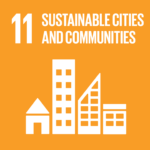Six high-growth segments offer investors new opportunities amid rising global demand for climate resilience solutions.
SINGAPORE — As the intensifying climate crisis exposes global vulnerabilities, a new report by Temasek and Boston Consulting Group (BCG) is turning investor attention to an overlooked frontier: climate adaptation. The study estimates that global adaptation spending could reach US$1.3 trillion annually by 2030 — with significant opportunities for private equity in Asia and beyond.
RELEVANT SUSTAINABLE GOALS



While most adaptation efforts have historically been public-sector led, the report makes a bold case for private capital to step in, identifying six investable categories across climate and health resilience. These include climate intelligence, resilient building materials, flood defense infrastructure, climate-adapted agricultural inputs, water efficiency technologies, and emergency medical services.
“So far, when we think about climate adaptation and resilience, everybody’s thinking about infrastructure and big government projects,” said Franziska Zimmermann, Managing Director for Sustainability at Temasek. “But nobody is thinking that private equity investors have a role to play. That’s what we wanted to explore.”
Mapping the Opportunity: Six High-Growth Segments
1. Climate Intelligence and Risk Analytics
Among the fastest-growing verticals, climate risk data and hazard forecasting tools are set to expand 15% annually over the next five years. Adoption is driven in part by new disclosure mandates under the International Sustainability Standards Board (ISSB) framework in markets like Hong Kong, Japan, and Singapore. Companies such as Tomorrow.io and Climavision are even building proprietary sensor networks to generate more granular forecasts.
High-profile acquisitions — such as Moody’s purchase of Four Twenty Seven and S&P’s acquisition of The Climate Service — suggest strong exit potential and a maturing investment landscape.
2. Resilient Building Materials
Construction firms are investing in next-generation facade systems and fire-resistant materials to bolster energy efficiency and withstand extreme temperatures. This sector is forecasted to grow between 6–8% annually, as real estate portfolios seek to reduce climate risk exposure and meet new regulatory standards.
3. Flood Defense Infrastructure
From modular barriers to advanced urban drainage systems, engineered flood defenses are expected to grow at 7–10% annually. Increasing weather volatility and urban vulnerability are fueling demand — especially in Asia-Pacific coastal cities.
4. Climate-Adaptive Agriculture
Crop input innovation is critical as food systems face climate stress. Solutions include synthetic biology, heat-resistant seeds, and micro-irrigation. The sector is forecast to expand 4–7% annually, with increasing mergers and acquisitions in commercial seed markets.
5. Water Efficiency Technologies
Water leakage detection — especially in cities — is a standout sub-sector. Integration of artificial intelligence is pushing growth in this segment, helping to drive the 6–8% annual growth expected in urban and industrial water efficiency systems.
6. Emergency Medical Services (EMS)
With rising heatwaves, floods, and disease outbreaks, EMS is becoming a high-priority resilience investment. The market — already led by giants like India’s GMR and Denmark’s Falck — is projected to grow 8–10% annually. Smaller operators with fewer than five ambulances offer ripe consolidation opportunities.
Adaptation: The Next Frontier for Climate Capital
The Temasek–BCG report categorizes adaptation investment into two archetypes: early-stage pure-play innovators and large diversified incumbents pivoting toward adaptation. This mirrors the early days of the mitigation-focused clean tech boom — with major players seeking cash-flow reliability while venturing into new markets.
Significantly, the localized nature of adaptation solutions — tailored to geography and infrastructure — enables lower entry valuations for private equity, according to the report. For instance, wildfire management tech remained mostly a North American niche until recently, but is now expanding into Europe and Asia as risk spreads.
The report arrives just days after another sobering analysis from Singapore’s sovereign wealth fund GIC, which projected that revenues from climate adaptation solutions could quadruple to US$4 trillion by 2050, with total investment opportunities rising from US$2 trillion to US$9 trillion.
GIC emphasized that investors need not predict exact climate scenarios to act, as financial models show limited variance across projections — a crucial insight for long-horizon funds.
Together, the Temasek and GIC reports signal a seismic shift in how institutional capital is viewing adaptation: not just as a moral imperative, but as a massive market opportunity.
The Road Ahead for Private Capital
Despite historically low levels of private funding in adaptation — particularly in developing countries — dedicated funds are beginning to emerge. Firms like Lightsmith Group, Mirova, and InsuResilience Investment Fund are pioneering the space, and Temasek’s latest move may nudge more regional players to follow suit.
As governments struggle to finance the infrastructure and services needed to protect billions from the worsening impacts of climate change, private equity may hold the key to unlocking resilient, scalable solutions.
With trillions at stake, the question is no longer if private capital will move into climate adaptation — but how fast.
You may also be interested in :
10 Inspiring Social Justice And Activism To Follow On Instagram


